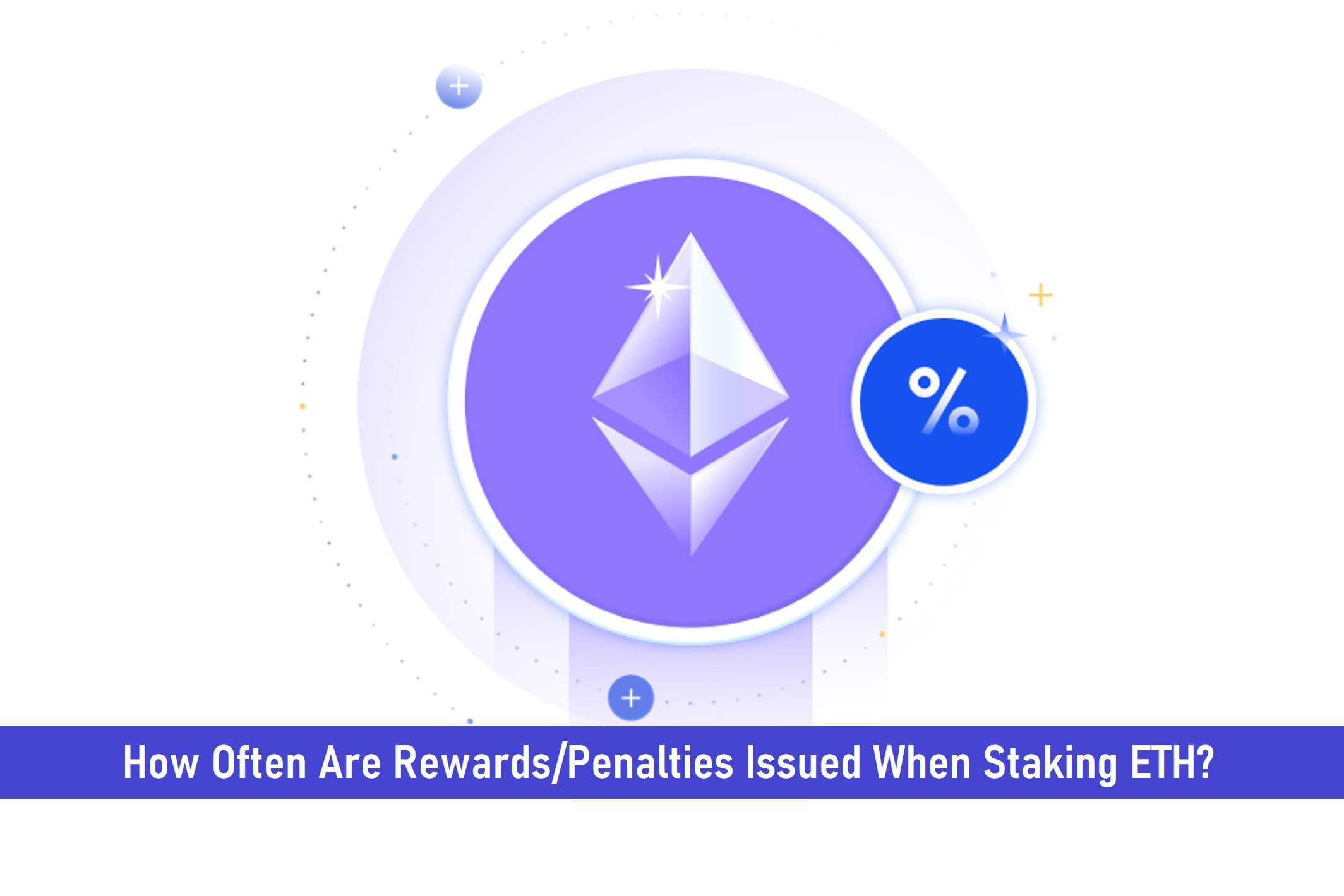
Even with the volatility of crypto, there are more people buying cryptos than ever before.
Although these market fluctuations are certainly not for the faint-hearted. It’s not uncommon for the price of Bitcoin and other altcoins to surge or tank within minutes to an hour which can cause panic for conservative investors.
But do you know that despite this, there is another way you can earn more crypto while waiting for price appreciation?
It is called Crypto Staking, and for many crypto investors and traders, it can be the key to finding a balance between active investing and passive income.
You can grow your crypto assets with the rewards from staking crypto and simultaneously hold your position and benefit from future price gains.
This article provides insights into how often rewards/penalties are issued when you stake ETH
Key Takeaways
• As the Ethereum network moves to proof-of-stake, Ethereum staking is a way ETH investors can earn a reward by locking up their coins (staking).
• Validators must stake 32 ETH (or multiples of 32 ETH). This is the capital required to ensure that validators have “something on the line” to perform well.
• An ETH validator node participates in consensus. They generate valuable ETH staking rewards.
• Validator nodes can be operated by solo staking, staking-as-a-service, pooled staking, or centralized exchanges.
SEE ALSO: 5 Best Places To Stake Ethereum
SEE ALSO: How Are ETH Validators Incentivized to Stay Active and Honest?
What is Ethereum Staking?

Ethereum staking can simply be defined as the process of locking up an amount of ETH – the native cryptocurrency of the Ethereum blockchain – for a specified time to contribute to the security of the blockchain and simultaneously earn the network rewards.
People who do this are known as “validators” or “stakers,” and are tasked with processing transactions, storing information, and adding blocks to the Beacon Chain – the new consensus model of Ethereum.
As a reward for their active involvement in the network, validators receive interest on their staked coins, denominated in ether.
This method of Ethereum staking not only serves as a passive income opportunity for contributors but also helps to secure the next iteration of the Ethereum network, dubbed Ethereum 2.0.
Ethereum 2.0 is the next phase of Ethereum that runs on the Beacon Chain, Ethereum’s proof-of-stake (PoS) consensus model.
How Often Are Rewards/Penalties Issued When Staking ETH?
Rewards and penalties are issued roughly every six and a half minutes; this period is usually referred to as an epoch. Every epoch, the network measures the actions of each validator and issues rewards or penalties depending on your activeness or inactivity.
As a validator, you will also receive unburnt gas fees when proposing blocks. The network protocol randomly chooses validators to propose blocks, and only one validator can propose a block for each 12-second slot.
There are about 7200 slots each day, and as a result, each validator has 7200 chances per day to propose a block. If there are 360,000 validators, each validator will average a block proposal every 50 days.
How Large Are The Rewards & Penalties?
This question is a little bit tricky as many factors have to be considered before we can come up with an answer to this question.
However, the most impactful factor on rewards earned for validating transactions is the total amount of stake in the network.
Simply put, the total number of ETH staked and the total amount of validators on the network. Depending on this figure the maximum annual return rate for a validator can range from 2 and 20%.
Given a fixed total number of validators, the rewards/penalties predominantly scale with the balance of the validator – attesting with a higher balance results in larger rewards/penalties whereas attesting with a lower balance results in lower rewards/penalties.
Key Elements of Staking
Here is a breakdown of a crypto network from a staking perspective;
- Validators: These are individuals running high-performance servers that host the entire blockchain and which ultimately cast votes on blocks of transactions.
A machine hosting the blockchain is also called a node.
Validators earn rewards for staked crypto once per epoch, which are then passed on to those who stake their cryptos for a less fee. With some cryptocurrencies, you can delegate your stake directly to a validator.
- Pools: A pool is just a group with a different strategy or goal. Some pools use algorithms to determine the best validator to use. Others might spread pooled stakes to as many validators as possible to help the network remain decentralized.
When you delegate to a pool, you pay a pool fee as well as a fee to the validators the pool uses.
- Delegator: Because you choose where to stake your crypto, you are the delegator, although pools often perform a secondary level of delegation.
In many cases, crypto investors who choose to stake do so through pools because pools do the work of choosing validators.
If you’re just starting with staking, a pool may be a safer choice to help ensure stable earnings.
Benefits of Staking Cryptocurrencies Like Ethereum
- Environmental and Planet friendly crypto: Proof-of-stake cryptocurrencies uses far lesser energy when compared to proof-of-work networks.
By supporting PoS crypto projects, you’re helping in keeping the environment and simultaneously earning.
- Compound earnings: Because your staking rewards are paid in the same token and automatically added to your staked position, you’ll earn compound interest that can supercharge your returns over time.
- Huge and Robust networks: You’re also helping the network you invested in. Proof-of-stake cryptocurrencies need staking to validate transactions. A robust network is better for long-term appreciation of the coins or tokens you own.
Frequently Asked Questions (FAQs)
Q1. How much ETH do you need to stake?
You have to stake a total of 32 ETH to become a validator on Ethereum
Q2. How much does 32 ETH cost?
As of the moment of writing, the minimum amount of ether required to become a validator is 32 ETH, which is equivalent to roughly $54,067.84.
Final Thoughts
The reward distributed to validators depends on the total number of ETH staked and the number of validators on the network.
When the pool of staked ETH dips, the annual interest rate increases.
As soon as the pool of validators is large enough to promote a decentralized ecosystem, the interest rate drops.
For now, validators can’t withdraw staked funds and accrued rewards, at least not until the Ethereum 2.0 and Ethereum 1.0 merge.
Read More




